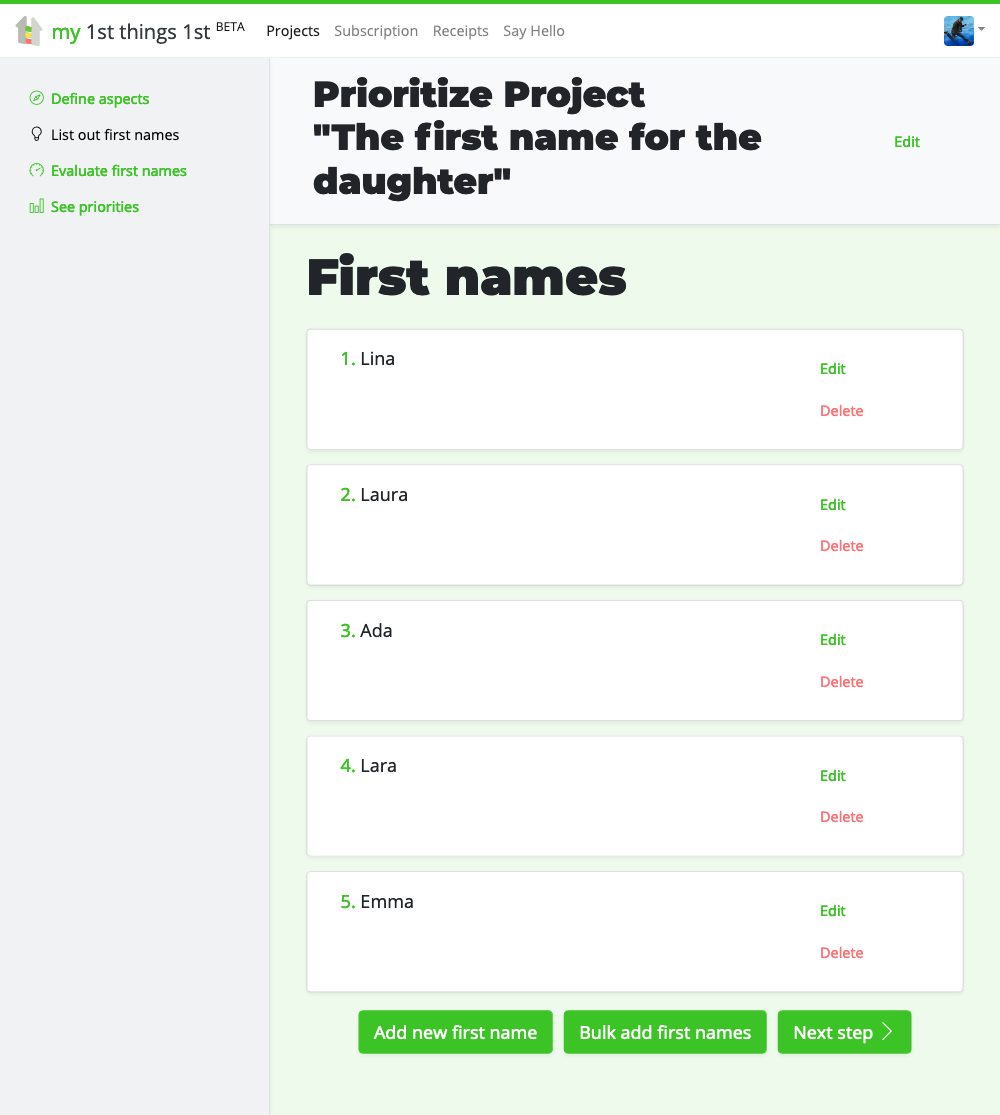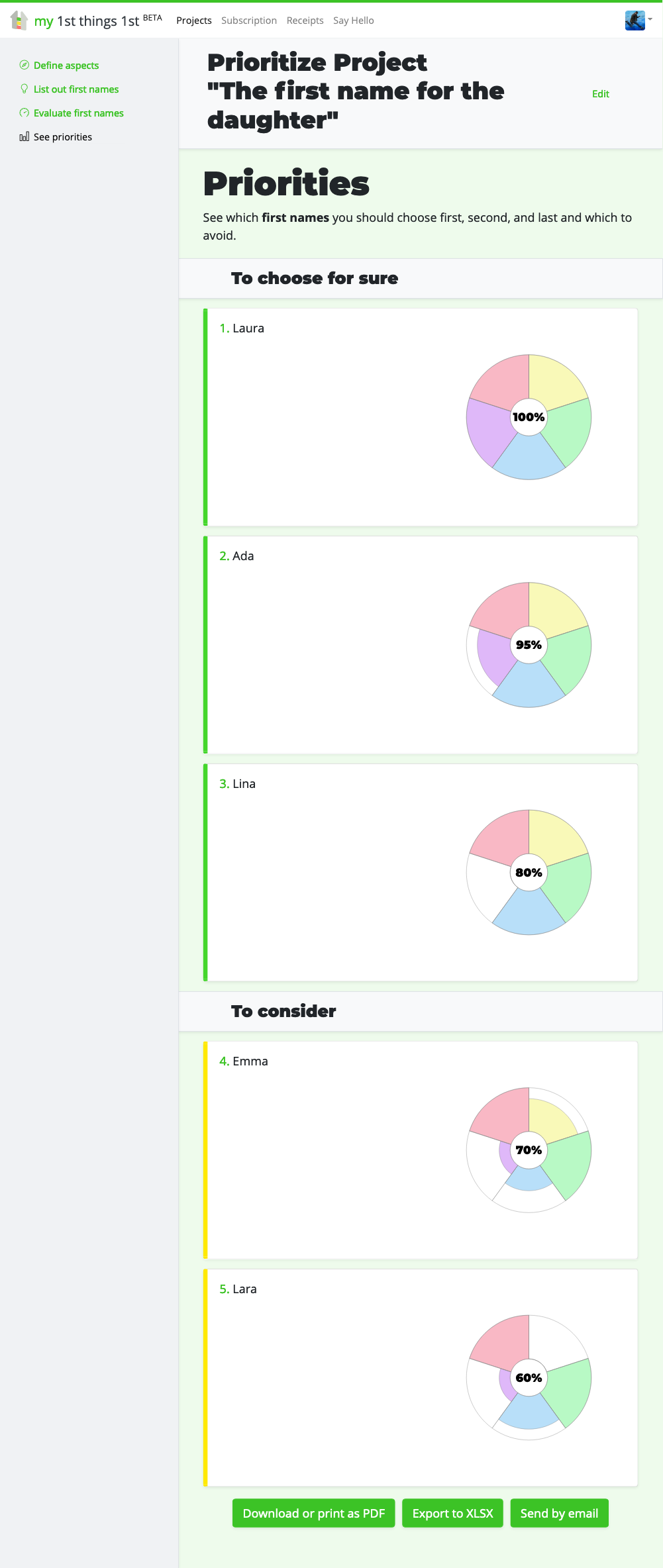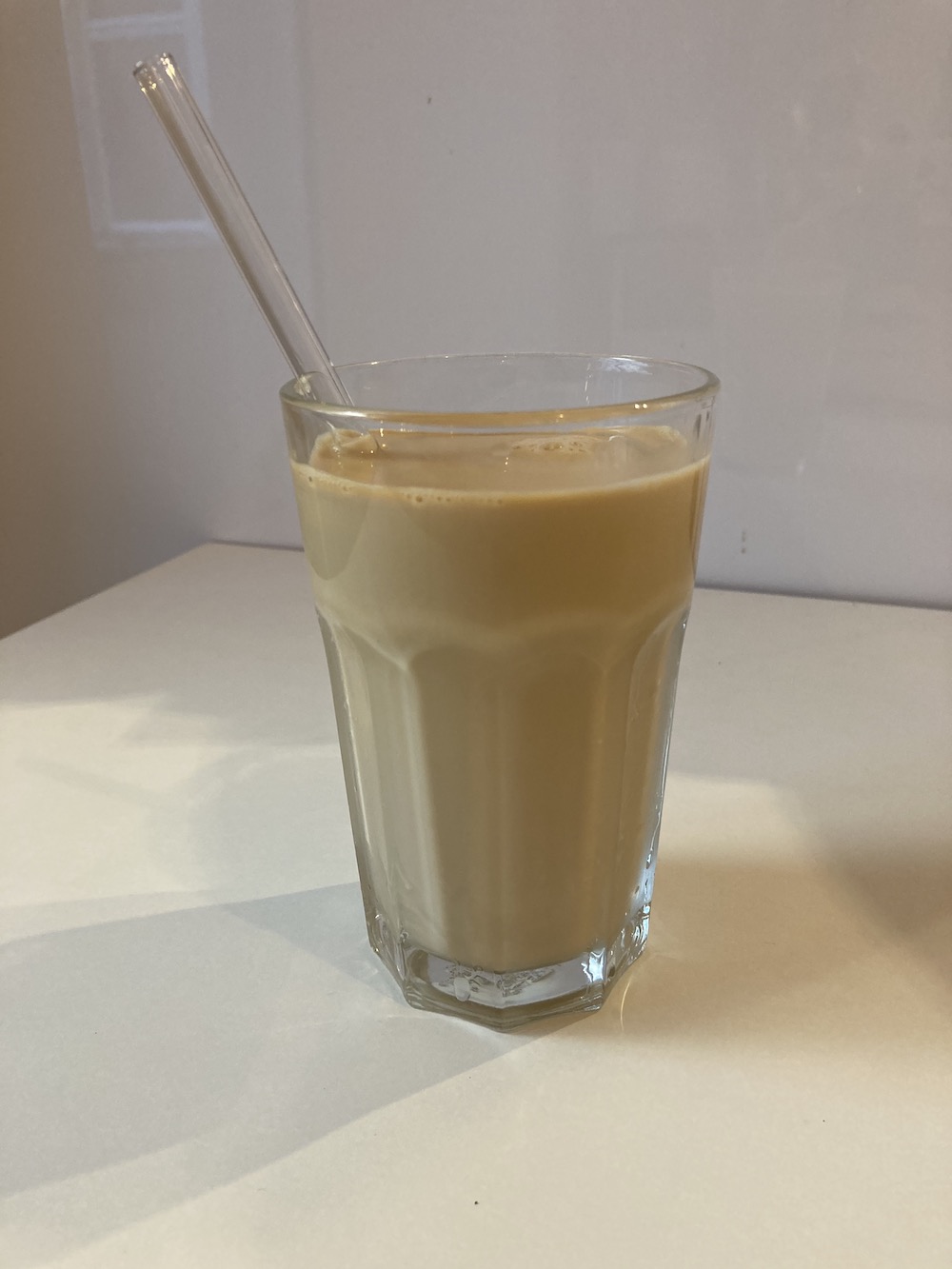This post first appeared on the 1st things 1st blog.
Whether your first name is James, Mary, or X Æ A-Xii, your name not only identifies you but also shapes your character and influences how other people will accept you. With the wrong name, you could have problems with being accepted by the society you are living in. With the wrong name, you can have difficulties getting a partner or job you want. With the wrong name, you can have a weight of associations that people bring to it. When you are about to have a baby, don’t give them the wrong name.
Our story
My wife and I are from Lithuania, and we are living in Berlin, Germany. Before the births of our kids, we did some name researches to find names that would be well accepted in Germany as well as being Lithuanian. I wouldn’t be a programmer if I wouldn’t take 500 most popular names in Germany and filter them using Python programming language to see the ones with Lithuanian word endings. From that point, we got just a handful of names and intuitively chose the ones that we liked most. I hope that Joris and Laura will enjoy the names they got at birth and will live integral and successful lives.
If we didn’t trust our intuition, we could have used the strategic prioritizer 1st things 1st to analyze a few names by multiple aspects. Let’s see how we could have done that.
Using the prioritizer
At 1st things 1st, you can evaluate anything (like first names) by multiple criteria (like aspects) and get calculated priorities. The workflow looks like this:
- You define your criteria or aspects.
- You list out your things, like first names.
- You evaluate each name by each aspect.
- You explore the prioritized first names.

Step 1. Define your aspects
Let’s brainstorm for some aspects that we can use to evaluate first names:
- Both parents like it
- Easy to pronounce
- Easy to spell
- Sounds good together with the last name
- Doesn’t have negative associations
- Has a nice meaning
- Unique
- Traditional
- Globally recognized
- Authentic in your native country
- Ethnically appropriate
- Doesn’t prompt negative nicknames
- Doesn’t sound foolish for a middle-aged person
- Some relative has it
- A person you admire has it
- A favorite book or movie character has it
I will choose the ones that are most important to me and enter into the prioritizer.
Both parents like it
Easy to pronounce
Easy to spell
Globally recognized
Doesn't sound foolish for a middle aged person
Here they are all added to the tool:

Step 2. List out the first names
Now let’s list some first names that you thought could be good candidates, let’s say, for a daughter:
- Lina
- Laura
- Ada
- Lara
- Emma

Step 3. Evaluate each name by each aspect
Then I go through the list of aspects and names and rate how each name matches each aspect.

Step 4. Explore the prioritized names
In the last step, I get all first names prioritized by how much they match all the aspects. “Laura” is in the first position with a 100% match. Other names got fewer points, so they are less recommended to choose.

Last thoughts
If people call you by another name already or you want to start a new chapter in your life, you can still officially change your first name in some countries. But if you care about your kids’ well being, choose their names wisely as soon as they come into this world.
Cover photo by Yoann Boyer







